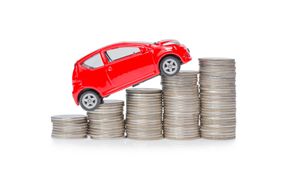(Finance) – In October the used car market (with data awaiting consolidation) marks the 11th consecutive growth: with 482,701 ownership transfers there was an increase of 11.7% compared to the 432,129 in the same period in 2022 (which in turn had highlighted a decline of 0.9% on 2021). Net transfers increased by 10.6% and mini-transfers by 13.2%. In the first 10 months the second-hand market closed with growth of 8.7% with 4,123,322 passages, compared to 3,792,852 in the 10 months of 2022 (-11.2% on January-October 2019). This is what theNational Union of Foreign Vehicle Representatives (UNRAE) in the’analysis of the used car market for October 2023.
Net transfers: Power supplies – Diesel confirmed itself in first position in October, among the favorite engines in the used market, with 45.4% (compared to 46.4% in 2022), 47.8% cumulatively, followed by petrol to 39.9% (-2.5 pp, to 39.0% in the 10 months). Hybrids occupy third position with 6.0% in October and 5.2% cumulatively, followed by LPG (at 5.0% in the month and 4.5% cumulatively). Methane stands at 2.3%, while the net transfers of pure electric cars (BEV) and plug-ins both cover a share of 0.7%.
Net transfers: Contractors – Trade between private individuals/companies continues to decline in share and drops in October
to 57.3% of all changes of ownership (56.9% in the first 10 months). Those from operator to end customer recovered slightly to 38.0% (39.0% cumulatively). Those coming from rentals (1.3% overall) and those from Km0 (3.3%) are growing. The analysis by region confirms the leadership of Lombardy with 15.8% of transfers, followed by Lazio at 9.8% share, down by 0.6 points, and Campania stable at 9.3%.
Net transfers: Seniority – October confirms the return of the share of net transfers of cars over 10 years old, which
however, it covers half of the passages (50.6% cumulatively). The share of cars from 6 to 10 years old rises to 15.9% (15.7% cumulatively), that of cars from 4 to 6 years old also grows (12.5% in the month and in January-September) and that of fresher cars from 0 to 1 year (at 6.0% in the month and 5.8% in the 10 months). The share of cars from 2 to 4 years old is stable (at 11.5% in the month, 11.7% in the cumulative), while that of cars from 1 to 2 years old starts to grow again (at 3.9% in October and 3 .8% in January-October).
Mini-transfers: Contractors – On the mini-transfer front, in October the share of private individuals or other companies trading in their cars lost 1 point, to 58.3% (61.2% in the 10 months), and the share of car collections lost 0.6 points by operators, at 25.6% (26.1% in January-October). Retired cars coming from long-term rentals increased by 2.0 points (9.6%) and lost 1.4 points in
short term (4.5%), those coming from Km0 rise to 2.0%.
Minivolture: Power supplies – In October, mini-transfers of diesel cars lost 3.4 points, to 48.8% (52.5% cumulatively), while
petrol lost 0.2 points, to 32.8% (31.6% in the 10 months). Methane contracted (to 2.2%), compared to an increase of more than half a point in LPG (to 5.3%). Mini-transfers of hybrid cars rise to 3rd place: 8.9% share. Plug-ins and BEV cars position themselves
at 1.1% and 0.9% respectively.
Mini-transfers: Seniority – Even among mini-transfers, the share of cars more than 10 years old contracted to 37.8% of the total (39.7% in
cumulative). However, the seniority bands from 6 to 10 years (18.6% in the month and 19.1% in the cumulative period), as well as those from 4 to 6 years (14.5% and 14.6% in the 10 months) are growing. and that from 0 to 1 year (6.8% in the month and 5.0% in the cumulative). There was a very slight decline in cars from 2 to 4 years (15.8% in the month and 15.9% cumulatively), while the share of those from 1 to 2 years contracted by almost 5 points (6.4% in the month and 5.6% in the 10 months).
(Photo: © Sittipong Leetangwattana / 123RF)
